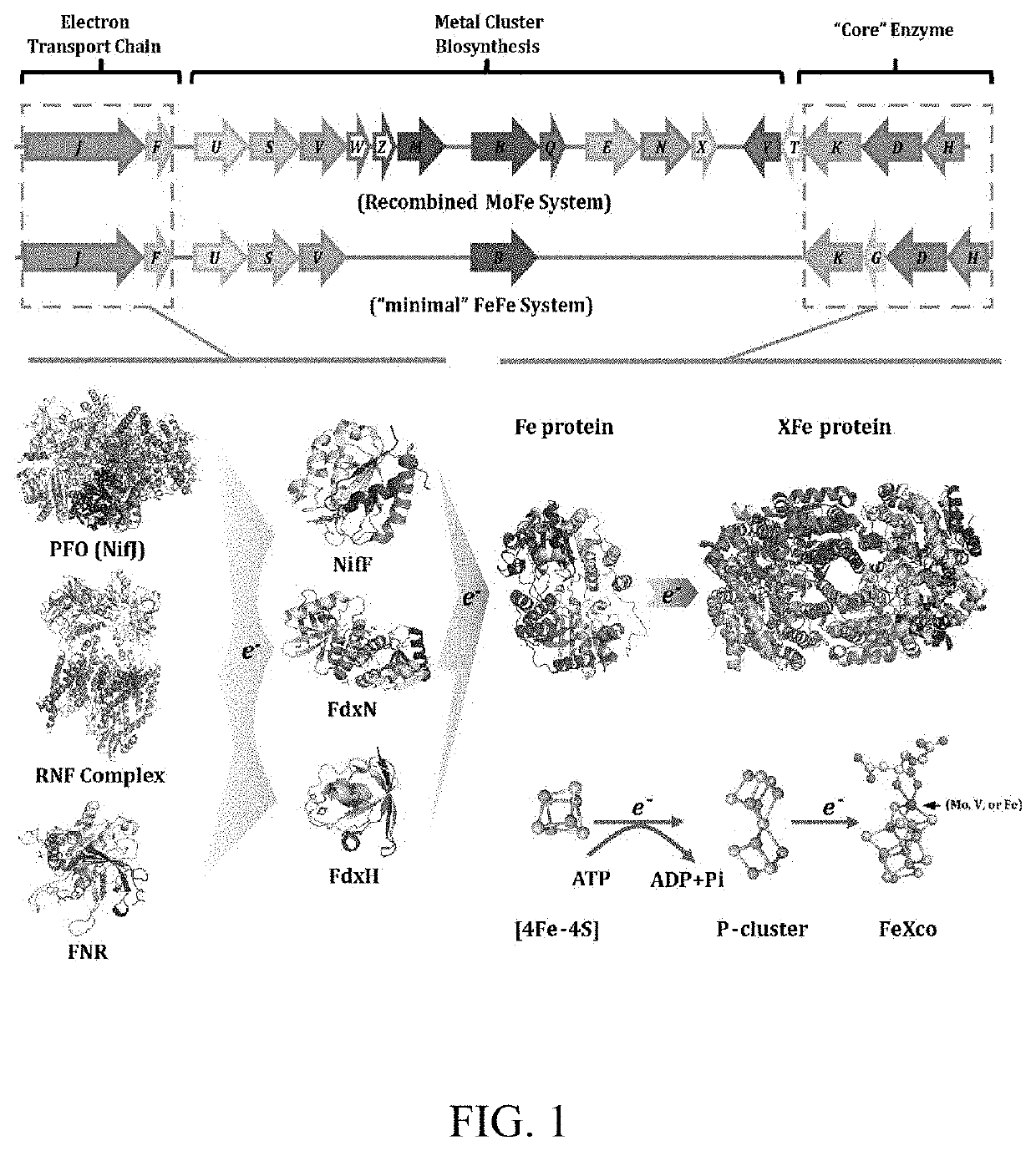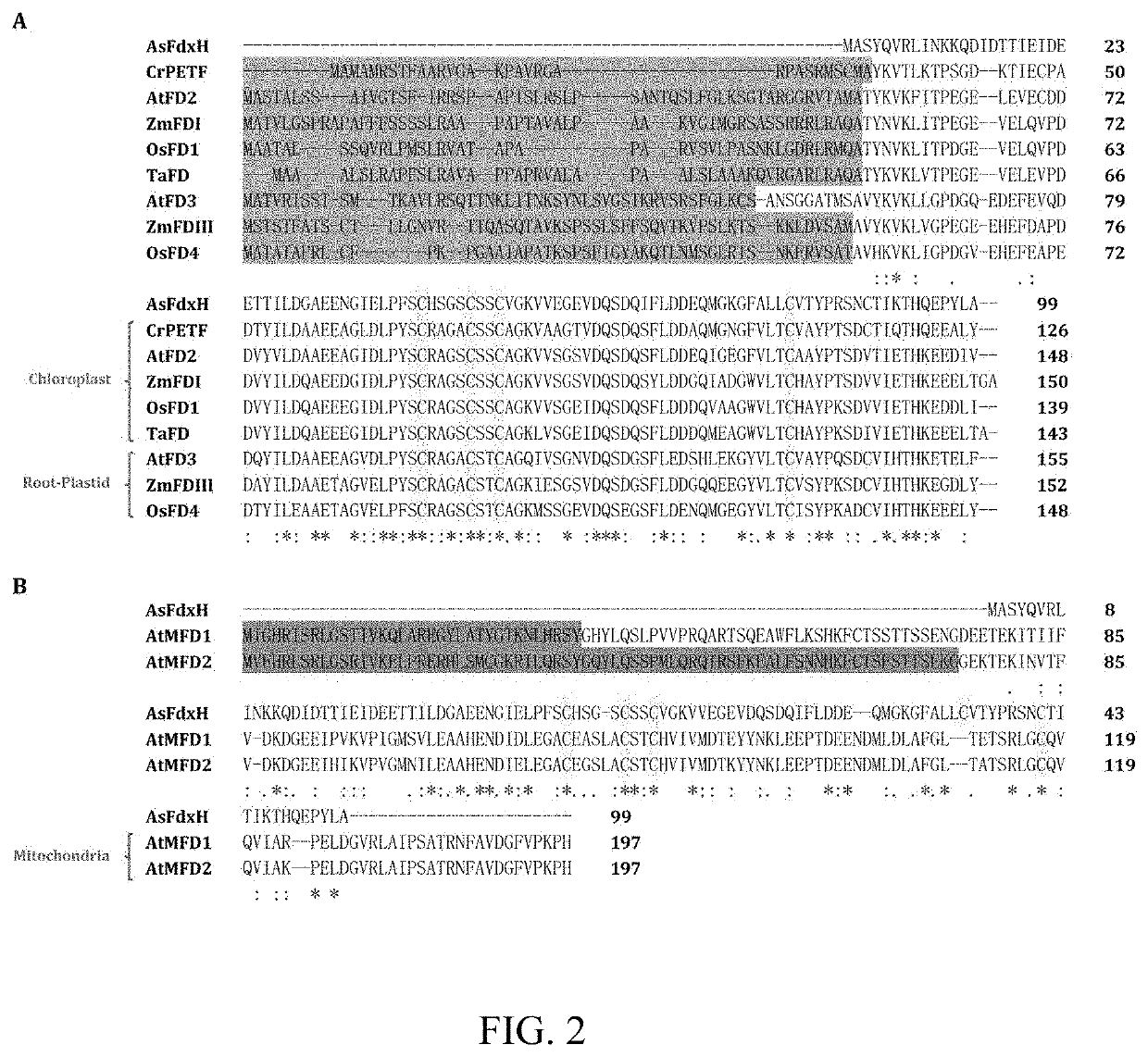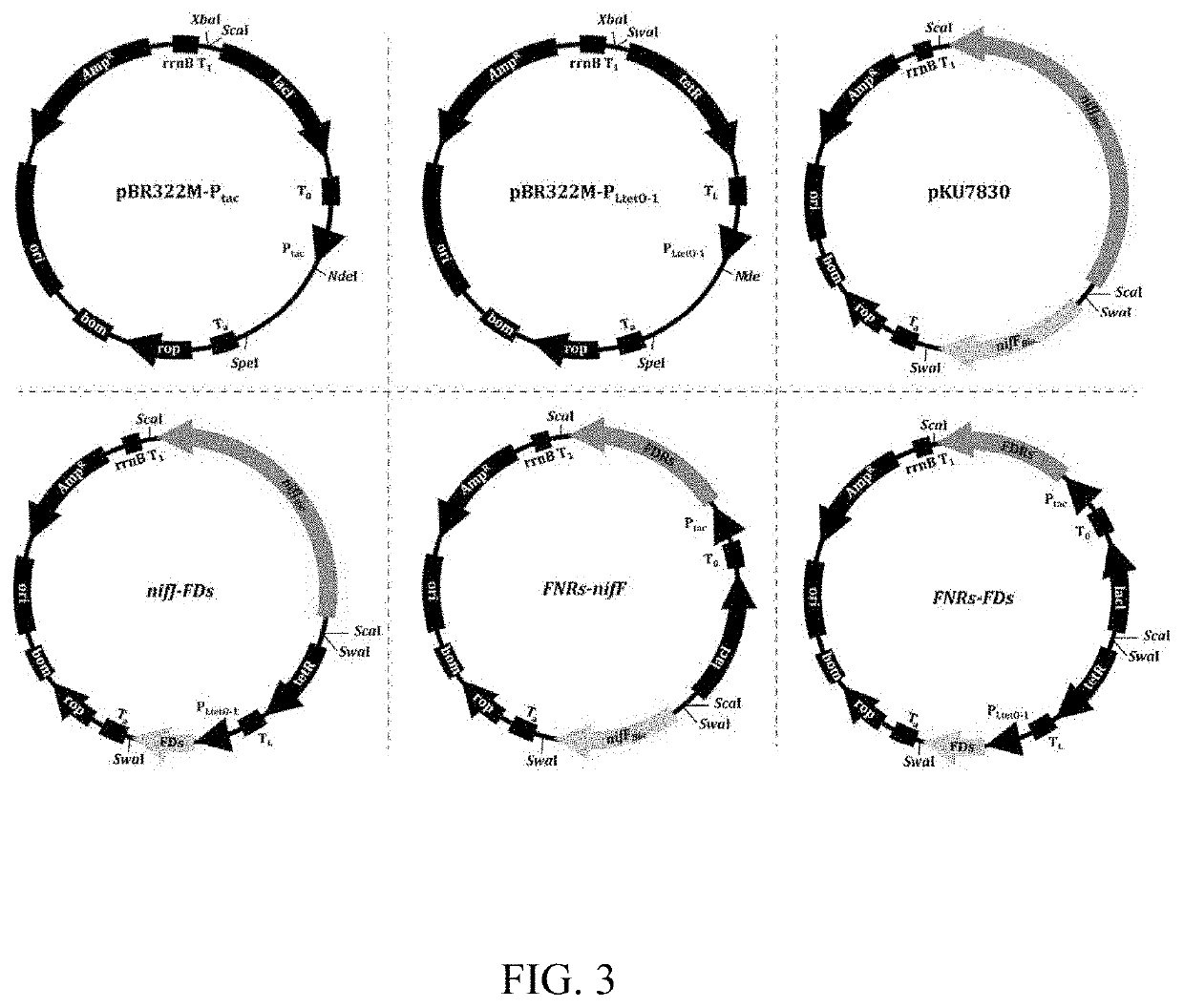Electron transport chain module from eukaryotic organelle and application thereof
a technology of electron transport chain and eukaryotic organelle, which is applied in the field of electron transport chain (etc) module from eukaryotic organelles, can solve the problems of large amount of atp and reducing power, and the difficulty of simplifying the nitrogenase system without losing the efficiency of nitrogenase, and achieves the effect of high energy demand and reducing power
- Summary
- Abstract
- Description
- Claims
- Application Information
AI Technical Summary
Benefits of technology
Problems solved by technology
Method used
Image
Examples
example 1
C Modules Consisting of the NifJ Protein and Plastid Ferredoxins can Functionally Support Nitrogenase Activity
[0043]Most plants are known to have multiple copies of ferredoxins in different organelles[21]. Through preliminary sequence analysis, we found that ferredoxins from plant chloroplast and root-plastid show high sequence identity with the Anabaena sp. PCC 7120 (As)fdxH gene product, which is the primary electron donor for the nitrogenase in the cyanobacteria[34]. To investigate if hybrid ETC modules formed by the NifJ protein and plastid ferredoxins could support nitrogenase activity in E. coli. Coding sequences of several representative plastid ferredoxins from Chlamydomonas reinhardtii (Cr), Arabidopsis thaliana (At), Zea mays (Zm), Oryza sativa (Os), and Triticum aestivum (Ta) were selected for further study. These selected representative ferredoxin encoding genes were codon optimized according to the codon bias of E. coli, optimized gene sequence shown in Sequence Listing...
example 2
Electron Supply of Hybrid ETC Modules Consisting of Plant-Type FNR and KoNifF, AsFdxH and AsFdxB, Respectively, to Nitrogenase System
[0046]In plants, three different types of the FNRs existing in different organelles are identified. All of these FNRs function to mediate electron transfer between the ferredoxins and NADPH[23, 25, 26]. To investigate if hybrid ETC modules consisting of the plant-type FNRs and electron donors (KoNifF, AsFdxH and AsFdxB) for nitrogenase could mediate electron transfer to nitrogenase, coding sequences of FNRs from the chloroplast or root-plastid of Cr, Zm, or MFDR from mitochondria of At were selected for testing. These hybrid modules were transformed into the E. coli, and their activities were assayed with acetylene reduction method. The results showed that none of the hybrid ETC modules consisting of the plant-type FNRs and the NifF could restore acetylene reduction activity for either the MoFe or FeFe nitrogenase systems; AsFdxB can form functional ET...
example 3
t ETC Modules from the Chloroplast and Root-Plastid Support Nitrogenase Activity
[0047]After verifying the function of the hybrid modules as the electron supplier for the nitrogenase systems, further experiments were carried out to investigate whether the intact ETC modules, consisting of FNRs and their cognate ferredoxins from plant organelles, could support the nitrogenase activity. By combining the Ptac controlled FNRs with PLtetO-1 controlled ferredoxins (details are provided in Materials and Methods), two intact chloroplast ETC modules, CrFNR-PETF and ZmLFNR-FDI; one intact root-plastid ETC module ZmRFNR-FDIII; and one intact mitochondria ETC module AtMFDR-MFD were constructed. As it is known that the AsPetH-FdxH module can support nitrogen fixation in its original host, this module was used as a control.
[0048]When these intact ETC modules were used to replace the NifJ-NifF modules of either the MoFe or the “minimal” FeFe nitrogenase system respectively, their ability to support...
PUM
| Property | Measurement | Unit |
|---|---|---|
| Fraction | aaaaa | aaaaa |
| Fraction | aaaaa | aaaaa |
| Fraction | aaaaa | aaaaa |
Abstract
Description
Claims
Application Information
 Login to View More
Login to View More - R&D
- Intellectual Property
- Life Sciences
- Materials
- Tech Scout
- Unparalleled Data Quality
- Higher Quality Content
- 60% Fewer Hallucinations
Browse by: Latest US Patents, China's latest patents, Technical Efficacy Thesaurus, Application Domain, Technology Topic, Popular Technical Reports.
© 2025 PatSnap. All rights reserved.Legal|Privacy policy|Modern Slavery Act Transparency Statement|Sitemap|About US| Contact US: help@patsnap.com



